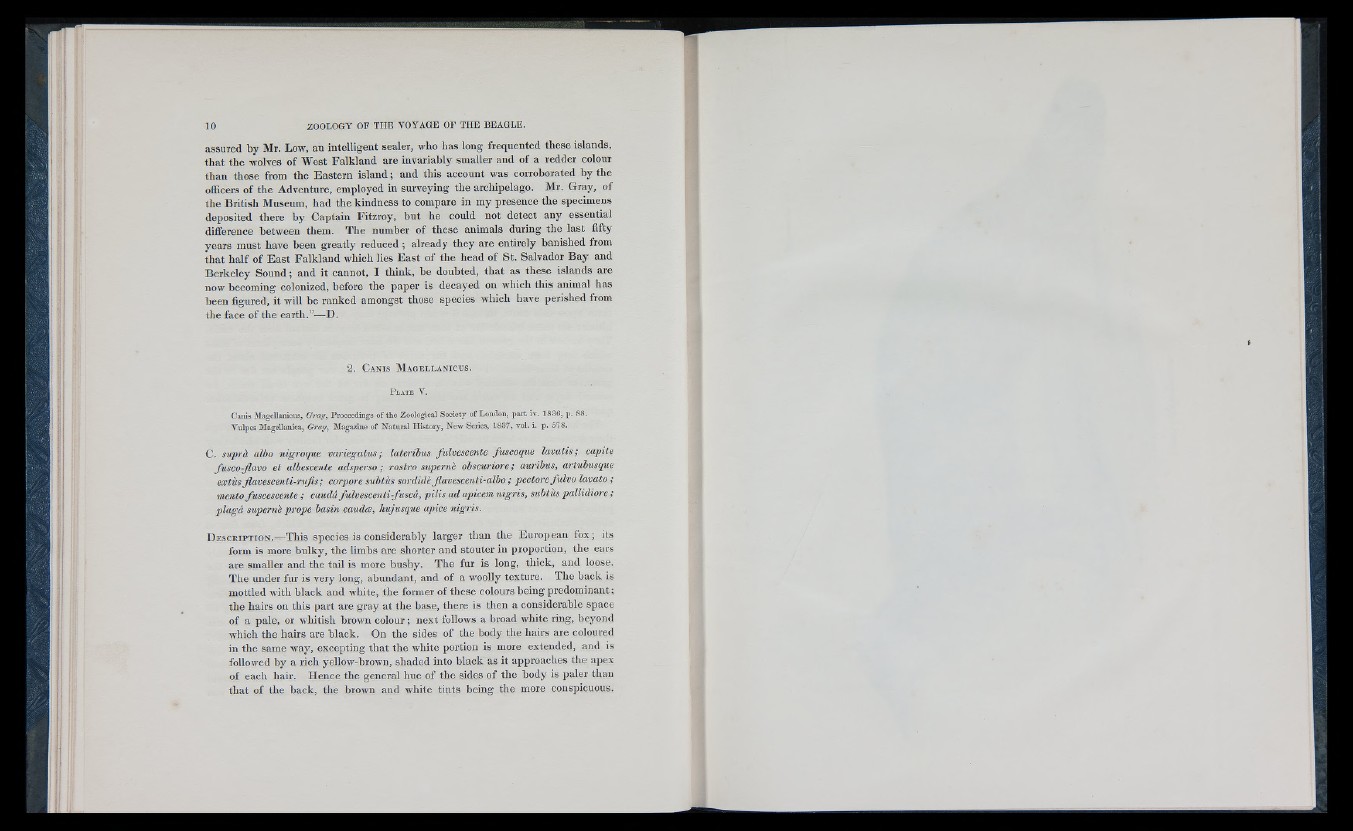
assured by Mr. Low, an intelligent sealer, who has long frequented these islands,
that the wolves of West Falkland are invariably smaller and of a redder colour
than those from the Eastern island; and this account was corroborated by the
officers of the Adventure, employed in surveying the archipelago. Mr. Gray, of
the British Museum, had the kindness to compare in my presence the specimens
deposited there by Captain Fitzroy, but he could not detect any essential
difference between them. The number of these animals during the last fifty
years must have been greatly reduced; already they are entirely banished from
that half of East Falkland which lies East of the head of St. Salvador Bay and
Berkeley Sound; and it cannot, I think, be doubted, that as these islands are
now becoming colonized, before the paper is decayed on which this animal has
been figured, it will be ranked amongst those species which have perished from
the face of the earth.”—D.
2 . C a n is M a g e l l a n i c u s .
Canis jMagellaniens, G ray, Proceedings of the Zoological Society of London, part iv. 1 8 3 6 , p . 88.
Vulpes jVlagellanica, Gray, Magazine of N atural History, New Series, 1 8 3 7 , yoI. i. p. 5 78 .
C. siiprh albo nigroque variegatus; laterihis fulvescente fuscoque lavatis; capite
fusco-flavo et albescente adsperso; rostro superne obscuriore; aurihus, artubusque
extus Jiavesceuti-ruJis; corpore subtiis sordide Jiavescenti-albo; pectore J'ulvo lavato;
mento fuscescente ; caudd fulvescenti-fuscd, pilis ad apicem nigris, subtus pallidiore;
plagd supernh prope basin caudce, hujusque apice nigris.
D e s c r i p t i o n .—This species is considerably larger than the European fox; its
form is more bulky, the limbs are shorter and stouter in proportion, the ears
are smaller and the tail is more bushy. The fur is long, thick, and loose.
The under fur is very long, abundant, and of a woolly texture. The back is
mottled with black and white, the former of these colours being predominant;
the hairs on this part are gray at the base, there is then a considerable space
of a pale, or whitish brown colour; next follows a broad white ring, beyond
which the hairs are black. On the sides of the body the hairs are coloured
in the same way, excepting that the white portion is more extended, and is
followed by a rich yellow-brown, shaded into black as it approaches the apex
of each hair. Hence the general hue of the sides of the body is paler than
that of the hack, the brown and white tints being the more conspicuous.